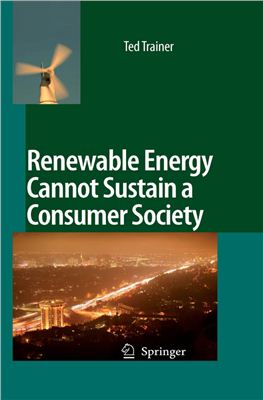Springer, 2007, Pages: 197
Chapters on wind, photovoltaic and solar thermal sources argue that these are not able to meet present electricity demands, let alone future demands. Even more impossible will be meeting the demand for liquid fuel. The planet’s capacity to produce biomass is far below what would be required. Chapter 6 explains why it is not likely that there will ever be a hydrogen economy, in view of the difficulties in generating sufficient hydrogen and especially considering the losses and inefficiencies in distributing it. Chapter 9 explains why nuclear energy is not the answer.
Wind Energy
Solar Thermal Electricity
Photovoltaic Solar Electricity
Liquid and Gaseous Fuels Derived from Biomass
The Hydrogen Economy
Storing Electricity
Conclusions on the Potential and the Limits
Why Nuclear Energy is Not the Answer
The Wider Context: Our Sustainability and Justice Predicament
The Simpler Way
Chapters on wind, photovoltaic and solar thermal sources argue that these are not able to meet present electricity demands, let alone future demands. Even more impossible will be meeting the demand for liquid fuel. The planet’s capacity to produce biomass is far below what would be required. Chapter 6 explains why it is not likely that there will ever be a hydrogen economy, in view of the difficulties in generating sufficient hydrogen and especially considering the losses and inefficiencies in distributing it. Chapter 9 explains why nuclear energy is not the answer.
Wind Energy
Solar Thermal Electricity
Photovoltaic Solar Electricity
Liquid and Gaseous Fuels Derived from Biomass
The Hydrogen Economy
Storing Electricity
Conclusions on the Potential and the Limits
Why Nuclear Energy is Not the Answer
The Wider Context: Our Sustainability and Justice Predicament
The Simpler Way

